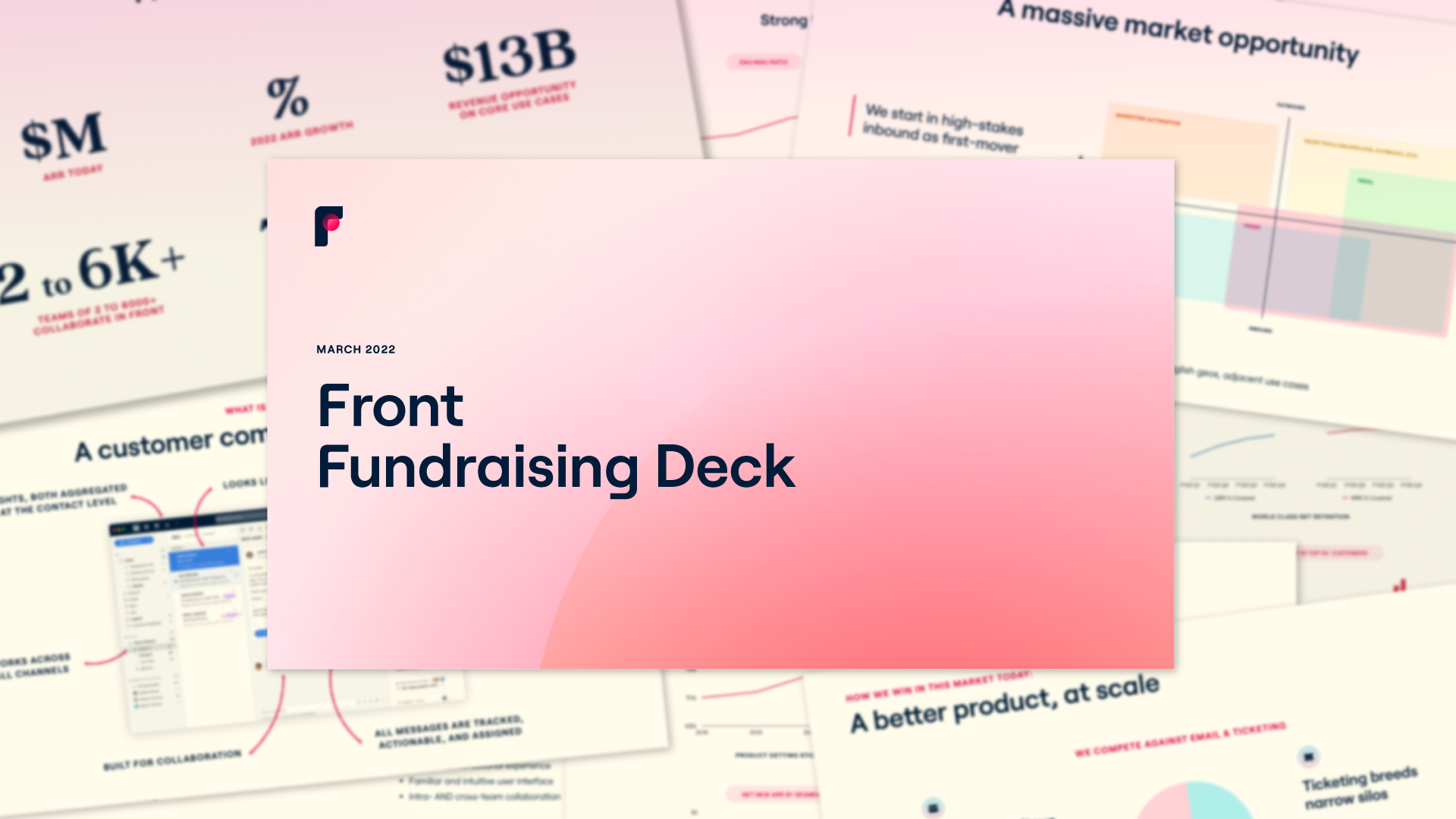Back by popular demand… for the fourth time, I’m sharing the deck I used to secure our latest round of funding!
It’s worth noting up front that this deck is shorter than the others. The reason: when I started raising, the macro environment was very uncertain, and I had no idea what reaction I would get from investors. I favored learning as quickly as possible and not spending too much time on the deck (in case I would have to raise at another time).
I’m excited to share what I created with you today. I attribute a large part of our success to the help I’ve gotten over the years, and I want to give back in any way I can — that’s why I decided to publish it. I hope it helps entrepreneurs out there looking for guidance on their next step!
The process
My fundraising process this time around was a bit different. In previous years, I had built solid relationships with investors ahead of time. This time, I turned to our CFO and our investors for insight on who they thought might be the best growth investors for Front at this stage. I then selected the investors from the recommended group who I knew could provide the most value. I picked seven out of the list — I felt like if I picked more, I would lose focus.
There’s a three-step process I followed when vetting investors:
Host a get-to-know-you meeting: this intro meeting should be used to get to know each other, share high-level metrics, problem space, and see if it could be a potential fit
Run through the deck
Share data room, let them do their due diligence
It took a little over five weeks between the first meeting and the signed term sheet.
The environment
Obviously, this is a tough environment to raise in, but I decided to raise despite the macro environment for a few main reasons:
The past two years, I wasn’t comfortable with the high multiples we were seeing. It felt unsustainable to me, and I was concerned about raising at a valuation it would take us years to grow into.
Now that multiples were more reasonable, I was more comfortable.
We had a history of capital efficiency (see Series A, Series B, and Series C for past investor decks), which I believed would be rewarded in today’s environment.
We had not raised in 2.5 years, and I was excited to get feedback from investors on the progress we had made.
It was pretty clear throughout this fundraising process that growth at all costs was no longer rewarded — and that startups need to show healthy unit economics. There were some specific questions we received for the first time: when will you hit rule of 40, how will you decrease G&A spend, S&M spend, and EPD spend as a % of revenue over time, and when will you reach profitability. I had to be prepared to shift my attention there and answer those questions effectively.
The deck
Here it is!
On investors
We’ve always thought about our investors as much more than our financial backers — they’re the strategic advisors who help us reach our next stage of growth. I’ve learned a lot from previous executives who invested in us, including the founders of Atlassian, Okta, Zoom, and Qualtrics.
This time around, I was excited to get a new fund on board. We hadn’t had a new fund in 4+ years, and the business had matured so much. It felt like a great moment to get a new pair of eyes on the business.
Given we’re in the business of customer comms, bringing Salesforce on board was strategic for us. Neeraj at Battery has one of the best track records, and Battery is pretty opinionated on the future of customer comms, which I really like. Jennifer Tejada is one of the CEOs I admire the most, and we lack women running public SaaS companies! Internally, we do a good job in representation (80% exec women, 50% leadership) — but on our cap table, not so much.
As always: I told my team this fundraising was the beginning of a new journey. It’s a milestone that will give us an opportunity to have even more impact, but it’s not an end in itself. Back to work! 😄
Written by Mathilde Collin
Originally Published: 1 July 2022











